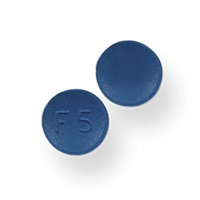Hair loss is very common in all people:
There are a variety of risk factors for hair loss, such as:
Family history & age: Male-pattern baldness and female-pattern baldness are a hereditary condition that results in gradual hair loss as you age.
Other medical conditions: Including hormonal changes (like from pregnancy, childbirth, menopause, and thyroid problems), alopecia areata (an autoimmune condition), diabetes, lupus, and scalp infections (like ringworm).
Medications and supplements: Drugs used to treat cancer, arthritis, depression, heart problems, gout, and high blood pressure can all cause hair loss. An excess of certain supplements such as selenium, Vitamin A, and Vitamin E, can also cause hair loss.
Mental health: Stress can result in a temporary loss of hair. Trichotillomania is also a psychological condition where a patient pulls their own hair out. The resulting hair loss from this is also usually temporary.
Hairstyles: Certain hairstyles or treatments can cause hair loss, including hot-oil treatments, use of hot hair tools like straightening irons, tight pigtails, and tight cornrows.
Cancer treatment: Radiation to the head can cause hair loss. While this is often temporary, hair might grow back differently.
Poor nutrition: An unhealthy diet, especially one low in iron or protein, can contribute to hair loss.
Smoking: Smoking causes inflammation, which can also cause hair loss.
The main symptom is hair loss. However, how the hair loss occurs—and to what extent—can vary widely between patients. For some, it happens quickly, while for others it is a gradual process. It most commonly occurs on the scalp, but it can also happen on other parts of the body.
Commonly, hair loss occurs as a gradual thinning of hair on your head, a receding hairline, patchy bald spots, hair that falls out easily, patches of scales on your scalp, and/or full body hair loss.
Please note that hair loss is different from hair shedding. According to the American Academy of Dermatology, it’s common to shed between 50 and 100 hairs a day.
Pharmacist Tip
It can take up to three months of consistent use for these medications to start working. Don’t be alarmed if at first you seem to be losing hair. These medications can cause an initial hair shedding phase during the first one to three months of use. This is completely normal and very common. It is simply the medication accelerating the growth process of the new hair underneath the old hair, which causes the old hair to fall out faster.
Treating hair loss with prescription medications such as finasteride or minoxidil needs to be continuous. If you stop taking the medications, your hair loss will come back. While on these medications, avoid using hair products that contain sodium lauryl sulfate (SLS), as this substance can cause poor hair quality and inhibit hair growth.
Hair loss is diagnosed through a variety of methods. Oftentimes, you can identify the problem yourself. When you see a healthcare professional, they may also perform:
Blood tests: Your doctor draws blood to identify potential underlying medical conditions.
Pull tests: Your doctor will lightly tug on your hair to see if (and how much) comes out easily.
Scalp biopsy: Your doctor collects skin samples or hair samples to look for a possible underlying infection.
Light microscopy: By examining individual hairs, your doctor can look for other possible hair disorders.
Hair loss can be treated with a variety of approaches. The most common prescription medication prescribed is finasteride (Propecia).
Topical minoxidil (Rogaine; Rogaine Extra Strength for Men; Rogaine Men’s; Rogaine Men's Extra Strength; Rogaine Women’s) is also frequently used and can be purchased over the counter in foam or topical solution form. Four months of continuous therapy with minoxidil may be necessary for hair growth.
Not all generics are the same. Different people respond better to different versions of the same drug, depending on the manufacturer. You can search our website to find the best fit for you.
In addition to prescription medication, you can also try some lifestyle remedies in order to help with the symptoms of hair loss. Some patients like to try different hair products or hairstyles to make hair loss areas less prominent. Maintaining a healthy diet, quitting smoking, refraining from hot hair tools, and exercising regularly can all help promote hair health as well.
Always consult with a doctor or pharmacist before starting supplements. An excess of certain supplements such as selenium, Vitamin A, and Vitamin E, can also cause hair loss.


